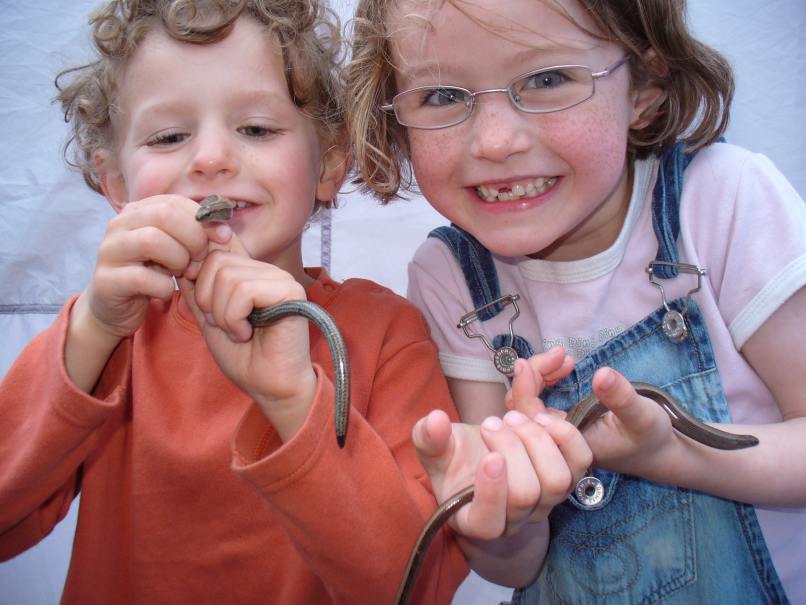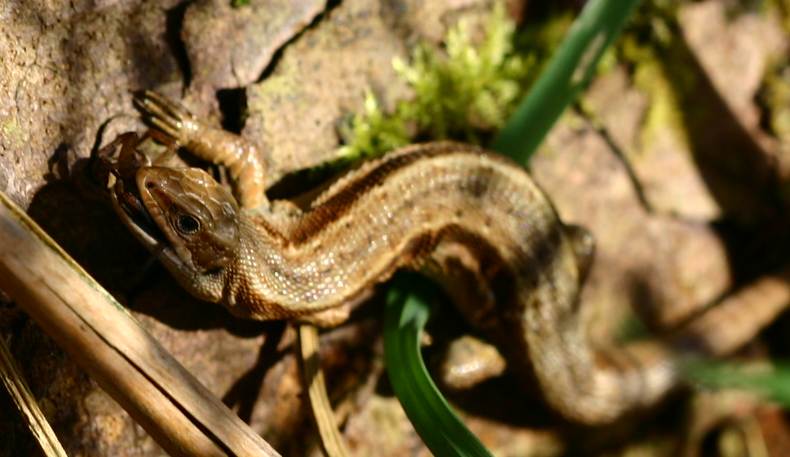 |
 |
foraging: |
| Author | Message |
|
tim hamlett Senior Member Joined: 17 Dec 2006 No. of posts: 572  View other posts by tim hamlett |
Posted: 14 Mar 2007 at what point do common lizards start foraging for food rather than just emerging to bask? tim
|
|
arvensis Senior Member Joined: 15 Mar 2006 No. of posts: 445 View other posts by arvensis |
Posted: 14 Mar 2007 Tim, I've got a piccy of a lizard eating what I think was a spider from last week. Mark Hampshire Amphibian and Reptile Group. |
|
tim hamlett Senior Member Joined: 17 Dec 2006 No. of posts: 572  View other posts by tim hamlett |
Posted: 14 Mar 2007 hi mark this probably sounds a bit sadistic but i would really enjoy seeing that picture! cheers tim |
|
arvensis Senior Member Joined: 15 Mar 2006 No. of posts: 445 View other posts by arvensis |
Posted: 14 Mar 2007 Picture taken on 7th march, a little out of focus, but as you requested:  Mark Hampshire Amphibian and Reptile Group. |
|
tim hamlett Senior Member Joined: 17 Dec 2006 No. of posts: 572  View other posts by tim hamlett |
Posted: 14 Mar 2007 even more gross than i thought it would be...excellent! the reason i asked was that i've been spending the odd hour or two this week looking around a local heathland site that is said to support common lizards and grass snakes. i've been looking for suitable basking sites but it occurred to me today that it was easily warm enough for small lizards to warm up quite quickly. there were also quite a lot of spiders about. the conditions have been good but i haven't seen anything in four visits. it may be that i've not been looking in the right way. it is also open heathland and i've never looked for lizards in that habitat before and it takes a bit of getting used to. thanks again for the piccy tim |
|
GemmaJF Admin Group Joined: 25 Jan 2003 No. of posts: 2090 View other posts by GemmaJF |
Posted: 14 Mar 2007 Tim, I've seen three of last years juveniles and 3 adults this year, all have been jet propelled already! You might want to try getting to an area where you think the basking sites 'look right' (your probably right that they are as this is almost instinctive after a while) nice and early. It might mean sitting it out for a while until the sun warms up but it will be worth the wait. Else go an a day with breaking sun, which will prolong basking activity. This year is odd. Here in Essex I am already falling into 'summer' mode of looking early and late, usually at this time of year it is mid-morning to mid-afternoon that gives the best results, but this year when the sun has been out it has warmed up very quickly indeed. Gemma Fairchild, Independent Ecological Consultant |
|
tim hamlett Senior Member Joined: 17 Dec 2006 No. of posts: 572  View other posts by tim hamlett |
Posted: 14 Mar 2007 thanks gemma if i could bother you for a little bit more advice. when i was a kid i used to go "creature hunting" all the time when on holiday in north wales. i used to find loads of newts and toads but only ever found lizards three times in what must have been seven or eight years. on each of these three occasions they were found around rocks with appropriate vegetation close by. since starting looking for reptiles again last year with the children we found lizards on four occasions, all around dry stone walls or scree or rocky outcrops. i would like to get to know this local site as it is so close, but i am not really familar with the habitat. when looking for basking areas i have been looking at elevated south-facing sites but none of them have what i would consider specific features like rocks, logs or brash piles. under these circumstances, ie an expanse of heather, gause and long grass, is there anything else to look out for? i know you've given advice to others on this general subject but if you could help i'd be really grateful. cheers tim |
|
Suzi Senior Member Joined: 06 Apr 2005 No. of posts: 860 View other posts by Suzi |
Posted: 14 Mar 2007 I don't especially go looking for lizards but do see them. I went an out and back walk last weekend and on the outward walk saw one juv. and on the same route a little later saw 5 others as well. No one had recently been along either time nor was my shadow falling on them. The conditions were the same as there was only a short time before I retraced my tracks and the sun was still out. Where I go mainly it is just heather, gorse and grass - the type that is now dead and bleached looking. The lizards will be basking on the grass where it is flattened or on the stems of the heather if it is at the track edge. Tree stumps can be good if they are in the right surroundings and lizards like to be vertical on fence posts in places. I've never found log piles any good for anything but others might disagree. Suz |
|
tim hamlett Senior Member Joined: 17 Dec 2006 No. of posts: 572  View other posts by tim hamlett |
Posted: 14 Mar 2007 that's really helpful suzi...thanks very much. i think i just need to chill and be persistent and patient. tim |
|
GemmaJF Admin Group Joined: 25 Jan 2003 No. of posts: 2090 View other posts by GemmaJF |
Posted: 14 Mar 2007 Log piles are variable, we have one at a local reserve where it is easy to see 20+ adults at once. Then you can have another with none at all. Certainly our garden log pile attracted viviparous lizards very quickly and I think the success or otherwise of log and brash piles largely depends on the avialability of other suitable basking sites, i.e. if there are none than the pile will be used. Logs warm up very quickly, try putting your hand on one early in the morning, often it will feel warm to the touch which to me indicates that 'log pile lizards' may be early out of bed! Usually it is some form of 'feature' where I will look when relying on purely visual techniques. The edge of a path can be a great 'feature' as it forms an interface between an open area and more rank vegetation. Banks are often good (I see lots of lizards while looking on banks for adder), SE and SW are worth a look, catching the early and late sun rather than S facing which catches full sun at the hottest times. I would never walk past an old tyre that is catching the sun in a grassland area, almost bound to reveal a lizard or two. The base of trees is often good, I've often seen hedgerow lizards basking a foot or so above the ground attached to the side of a tree or bush. By far the most lizards sightings I get in a year though rely on artificial cover objects, black corrugated bitumen being the one of choice, on or under I see hundreds every year. Lizard spotting is very weather dependent though, I remember surveying a sea wall a couple of years ago. I went maybe 4 or 5 times and was getting 1 or 2 sightings. Then one afternoon in the failing sun I walked the transect and counted 30+ adults basking on the top of the sea purslane that skirts the wall.
Gemma Fairchild, Independent Ecological Consultant |
|
tim hamlett Senior Member Joined: 17 Dec 2006 No. of posts: 572  View other posts by tim hamlett |
Posted: 14 Mar 2007 thanks gemma. again that's a big help. i can easily 'acquire' some large corrugated tin sheets which i can cut to appropriate size. sounds like it may be worth placing some around the common. cheers again tim
|
- foraging |